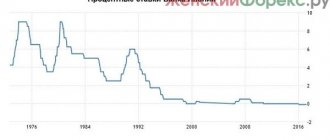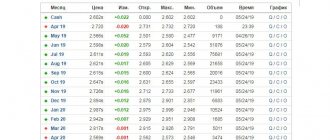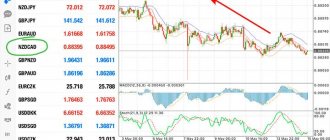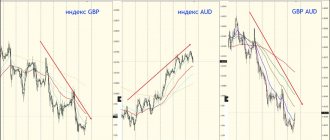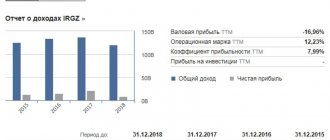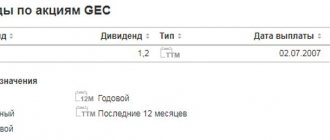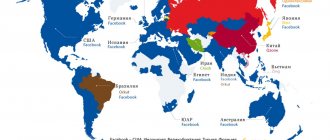The Australian dollar is one of the leading positions in the international foreign exchange market.
Today, the Australian dollar is a freely convertible currency and is often used in foreign exchange and trading transactions.
The popularity of the Australian dollar is based on:
- significant interest rate;
- stability of the political system;
- stable state of the economy;
- independence of the foreign exchange market from the government of the country.
The Australian dollar exchange rate is determined at auctions on the international foreign exchange market. Here you can see its exchange rate for the Central Bank of the Russian Federation.
Interactive graph
The online chart shows the changing ratio of the Australian dollar to the US dollar for today, for a month, for a year - you can choose the time frame. Average fluctuations in exchange rates within one session are 70-90 points, which gives traders the opportunity to quickly make money. Increased activity is observed from 01:00 to 09:00 Moscow time, when the Asian and Australian exchanges trade.
One of the features of the quote is its negative correlation with the USD/CAD pair. The rate of this pair fluctuates in the opposite direction to the Australian dollar versus the US dollar. This can be used to forecast the dynamics of AUD/USD.
Codes and symbols
AUD is the alphabetic code of the Australian dollar, 036 is its digital code. Quite often it is denoted by the dollar sign $. However, the currency symbol used unofficially is A$ or AU$. This is necessary so that the Australian dollar can be distinguished from other currencies that are also denominated in dollars.
Countries of circulation of the Australian dollar
As the name of the country of the currency indicates, the Australian dollar is the official currency of the Commonwealth of Australia, consisting of Australia (with six states), as well as the following autonomous or self-governing territories:
Deposit “Polza” Home Credit Bank, Person. No. 316
to 10%
per annum
from 1
up to 1095 days
Make a contribution
- Christmas Island;
- Cocos Islands;
- Norfolk Island.
In addition, it is used as the national currency by three independent island states in the Pacific Ocean:
- Kiribati;
- Nauru;
- Tuvalu.
Analysis of factors influencing the quote
When analyzing and forecasting the exchange rate of the AUD/USD currency pair, the following factors are taken into account:
- Interest rate. The Reserve Bank of Australia is keeping it relatively stable, giving investors the opportunity to make money on long-term deposits. The likelihood of a change in the rate is reflected in the exchange rate of the national currency. Monthly RBA meetings add to the volatility of the Australian dollar even before the release of statements. If the Bank of Australia rate cut is predicted, the AUD/USD rate goes down. When players expect a bet increase, the quote goes up. The difference between the American and Australian interest rates is taken into account in the analysis and is used when working with the pair.
- Consumer price index. The Reserve Bank of Australia keeps it within 2-3%. If this indicator rises, investors expect that the RBA will increase the interest rate to curb inflation. This could cause the Australian currency to rise. If inflation is below a given level, a rate cut is likely to stimulate the economy. At the same time, the AUD/USD rate on Forex may decrease.
- The dynamics of Australia's GDP significantly affects the exchange rate forecast for the AUD/USD pair. Economic growth increases investment. At the same time, the government stops stimulating the economy with low interest rates. The GDP indicator is published quarterly in the economic calendar.
- Business Activity Index. This indicator allows you to assess the current state of the Australian economy compared to the previous period. Used to analyze the business climate and forecast future trends. The dynamics of this indicator can cause significant fluctuations in the foreign exchange market.
- The unemployment rate is an important indicator of the state of the economy. As it grows, household incomes fall, which reduces domestic consumption of goods. This worsens the economy. If unemployment decreases, this indicates an improvement in the economic situation, which causes an increase in the exchange rate of the national currency.
- International prices for gold and other raw materials. The sale of gold is a source of a significant portion of the country's budget revenues. Australia exports oil, coal, iron ore, wheat, wool, and meat. Fluctuations in international prices for these goods correlate with the exchange rate of the Australian dollar.
- Agriculture. Cereal and oilseed crops play an important role in the Australian economy. Weather is a factor that affects crop yields. News of droughts or hurricanes could weaken the Australian currency.
- Political or economic news from China and Japan. These countries are the largest importers of Australian raw materials. The domestic political situation in Australia is stable, and its geographical location allows it to avoid international conflicts. But events in partner countries are reflected in the exchange rate of the Australian dollar against the US dollar.
An economic calendar that shows the dates and times of publication of important macroeconomic indicators is an effective tool for traders. It displays past performance, predicted and new values. This calendar is used when making Forex forecasts for AUD/USD.
Playing on market expectations is risky: if the announced figures do not coincide with the forecast, this can cause serious fluctuations in the quote. It is recommended to open a trade after the news is published.
Australian dollar exchange rate
Australian dollar
is the official currency of the Commonwealth of Australia, which, in addition to the six states of the continent itself, also includes a number of islands of the Indian and Pacific Oceans, such as Christmas Island, Cocos Islands, Norfolk Islands and others. In addition, the Australian dollar is used as the national currency by three independent island states: Kiribati, Nauru and Tuvalu. Bank code is AUD. 1 Australian dollar is equal to 100 cents. Current banknote denominations are 100, 50, 20, 10 and 5 dollars. Coins in circulation: 2 and 1 dollar, 50, 20, 10 and 5 cents.
Australian banknotes are interesting because they are made not of paper, but of polypropylene polymer, that is, thin plastic. The front of the A$5 note features a portrait of Sir Henry Parkes, a 19th-century politician who was one of the founders of the Commonwealth of Australia; on the back is the late 19th – early 20th century writer, journalist and politician Katherine Helen Spence. On 10 dollars - the poet, author of the unofficial Australian anthem "Dancing Matilda" Andrew Barton Patterson and poet Mary Gilmour. The $20 bill depicts a portrait of a woman of amazing fate, Mary Reiby, who lived in the late 18th and early 19th centuries, who was brought to the continent as a prisoner from Great Britain, but managed to make a career in business. On the back of the note is John Flynn, who founded the world's first air ambulance in 1934. On $50 are David Unaipon (Australian-born writer, journalist and inventor) and Edith Cohen (the first woman elected to the Australian Parliament). On the front side of the $100 bill is late 19th-early 20th century opera singer Nellie Melba, and on the back is World War I hero General Sir John Monash.
Since the official head of the Commonwealth of Australia is the Queen of Great Britain, the obverse of all coins features a portrait of Elizabeth II. The reverse of 5 cents contains an image of an echidna, 10 cents - a large lyrebird, 20 cents - a platypus. The 50 cent coin is 12-sided and has the Australian Coat of Arms on the reverse. On 1 dollar there are five kangaroos, on 2 dollars there is a portrait of an aborigine with a boomerang and six stars (symbols of the states of the continent).
After its discovery in the 18th century and at the beginning of the 20th century, Australia was a colony of Great Britain, so it did not have its own unified monetary system; the British pound sterling was in circulation, despite attempts by individual states to introduce their own means of payment.
The country's first national currency was the Australian pound, which first appeared in 1910. It consisted of 20 shillings, each of which was equal to 12 pence.
Until 1914, while the gold standard was maintained, the Australian pound was equal to one British pound. Britain's abandonment of gold backing from 1914 to 1926 resulted in the Australian pound becoming equal to 0.8 of the British pound.
For several decades, the country's monetary authorities followed British policies (for example, devaluing the Australian pound in 1929 and 1949).
However, after the Second World War there was a rapprochement between Australia and the United States of America. Decimal currency was introduced in 1966. And it was then that the Australian dollar became the new name of the currency. The exchange rate was $2 per pound.
In 1967, Australia introduced its own monetary policy for the first time: the British pound was devalued, but the Australian dollar remained unchanged at US$1.12 per dollar. Thus, the Commonwealth of Australia became an independent participant in the Bretton Woods monetary system.
Over the years, the Australian dollar strengthened, by 1973 it was worth US$1.4885.
December 18, 1983 is considered the official date from which the Australian dollar floats, that is, it is determined by supply and demand on the free market. Over the next two decades, the highest recorded rate was 0.881 US dollars in December 1988, the lowest was 0.4775 in April 2001.
In the early 2000s, the Australian dollar strengthened, and in the spring of 2012 you can get 1.02-1.04 US dollars for it. In the summer of 2018, the Australian dollar to US dollar exchange rate was in the range of 0.7229-0.7655. Some analysts predict that this trend will continue for the foreseeable future. The reason for the growth of the Australian dollar is primarily the traditionally high rates of the Reserve Bank of Australia, which serves as the country's central bank.
The Australian dollar is a freely convertible currency and a popular instrument in the international Forex market. It is believed that at least 5% of all transactions in this segment are made with it.
In addition, the Australian economy is of great interest to investors. Before the global financial crisis, it demonstrated 17 years of stable growth. At the same time, the country has a developed market infrastructure and is rich in minerals, such as coal, iron and copper ore, gold, natural gas, and uranium. Provides investors with first-class legal protection and guarantees.
The import and export of currency, including national currency, is unlimited in Australia. As for exchanging cash, it is more profitable to do it in banks than in hotel exchange offices. The country's financial sector is developed at the highest level, so card payments are possible almost everywhere.
Current forecast
Today's AUD/USD forecast is compiled based on the readings of 20 indicators in timeframes from 5 minutes to 1 day.
You should choose the strongest forecasts for AUD/USD for today: actively buy and actively sell. Recommendations for trading AUD/USD are based on an analysis of indicators that affect the dynamics of the pair. The AUD/USD currency pair is considered one of the most reliable financial instruments in the Forex currency market. When the financial market is unstable, traders buy gold, which causes the Australian dollar to rise against the US dollar. This pair is characterized by high liquidity and resistance to speculation. News trading is an effective strategy for working with the AUD/USD quote, subject to competent analysis and monitoring of the economic calendar.
(
2 ratings, average: 4.50 out of 5)
Currency information
AUD The Australian dollar is one of the youngest currencies in use today. It went into circulation in February 1966. The dollar replaced the previously used Australian pound.
Its appearance is associated with Australia's interests in rapprochement with the United States of America, which also led to the introduction of a decimal monetary system in the country.
Today the Australian dollar has banknotes in the following denominations: 100, 50, 20, 10 and 5 dollars.
Coins in denominations of 2 and 1 dollar, as well as 50, 20, 10 and 5 cents are also used in circulation.
One national dollar is equal to 100 cents.
Australian money has a design that is quite typical for the currencies of the countries that are part of the British Commonwealth. However, they also have their own original features.
In particular, the obverse and reverse of the banknotes depict portraits of prominent Australian figures (political, social and cultural) who have made a significant contribution to the development of the state.
Contribution “Only advantages. Promo" Loko-Bank, Lits. No. 2707
up to 5.9%
per annum
from 50 thousand
up to 1100 days
Make a contribution
Since 1988, Australian dollar banknotes have been made using a special plastic material.
Australian dollar banknotes are printed at the Royal Australian Mint's government-owned factories in Melbourne and Perth.
Australian coins have a regular round shape. The exception is the fifty cent coin, made in the form of a regular fourteen-sided coin.
The obverse of the coins features a profile portrait of Queen Elizabeth II of Great Britain (as the official head of the Commonwealth of Australia), and the reverse depicts animals of Australia.
Long-term Australian dollar exchange rate forecast for 2021, 2021, 2022, 2023, 2024 and 2025.
| Month | Open | Min-Max | Closing rate (forecast) | Months,% | Total,% |
| 2021 | |||||
| May | 56.98 | 56.35 — 57.61 | ▼ 56.35 -1.11% | -1.11% | 2.19% |
| June | 56.35 | 54.60 — 58.10 | ▲ 58.10 1.93% | 1.93% | 6.02% |
| July | 58.10 | 58.09 — 58.11 | ▲ 58.09 1.92% | 1.92% | 0.03% |
| August | 58.09 | 56.87 — 59.31 | ▼ 56.87 -0.19% | -0.19% | 4.11% |
| September | 56.87 | 56.43 — 57.31 | ▲ 57.31 0.58% | 0.58% | 1.54% |
| October | 57.31 | 56.81 — 57.81 | ▲ 57.81 1.44% | 1.44% | 1.73% |
| november | 57.81 | 57.78 — 57.84 | ▲ 57.84 1.49% | 1.49% | 0.10% |
| December | 57.84 | 56.35 — 59.33 | ▼ 56.35 -1.11% | -1.11% | 5.02% |
| 2022 | |||||
| January | 56.35 | 54.68 — 58.02 | ▲ 58.02 1.80% | 1.80% | 5.76% |
| February | 58.02 | 57.25 — 58.79 | ▲ 57.25 0.48% | 0.48% | 2.62% |
| March | 57.25 | 56.26 — 58.24 | ▼ 56.26 -1.28% | -1.28% | 3.40% |
| April | 56.26 | 55.08 — 57.44 | ▲ 57.44 0.81% | 0.81% | 4.11% |
| May | 57.44 | 56.63 — 58.25 | ▼ 56.63 -0.61% | -0.61% | 2.78% |
| June | 56.63 | 56.48 — 56.78 | ▼ 56.78 -0.35% | -0.35% | 0.53% |
| July | 56.78 | 56.03 — 57.53 | ▲ 57.53 0.96% | 0.96% | 2.61% |
| August | 57.53 | 57.14 — 57.92 | ▲ 57.92 1.63% | 1.63% | 1.35% |
| September | 57.92 | 57.18 — 58.66 | ▲ 57.18 0.35% | 0.35% | 2.52% |
| October | 57.18 | 56.17 — 58.19 | ▼ 56.17 -1.44% | -1.44% | 3.47% |
| november | 56.17 | 55.85 — 56.49 | ▼ 56.49 -0.86% | -0.86% | 1.13% |
| December | 56.49 | 55.86 — 57.12 | ▲ 57.12 0.25% | 0.25% | 2.21% |
| 2023 | |||||
| January | 57.12 | 56.99 — 57.25 | ▲ 57.25 0.48% | 0.48% | 0.45% |
| February | 57.25 | 55.93 — 58.57 | ▼ 55.93 -1.87% | -1.87% | 4.51% |
| March | 55.93 | 55.22 — 56.64 | ▼ 56.64 -0.60% | -0.60% | 2.51% |
| April | 56.64 | 55.88 — 57.40 | ▼ 55.88 -1.96% | -1.96% | 2.65% |
| May | 55.88 | 53.70 — 58.06 | ▲ 58.06 1.86% | 1.86% | 7.51% |
| June | 58.06 | 57.41 — 58.71 | ▲ 57.41 0.75% | 0.75% | 2.21% |
| July | 57.41 | 56.68 — 58.14 | ▼ 56.68 -0.52% | -0.52% | 2.51% |
| August | 56.68 | 56.20 — 57.16 | ▼ 56.20 -1.38% | -1.38% | 1.68% |
| September | 56.20 | 55.44 — 56.96 | ▼ 56.96 -0.03% | -0.03% | 2.67% |
| October | 56.96 | 56.66 — 57.26 | ▼ 56.66 -0.56% | -0.56% | 1.05% |
| november | 56.66 | 56.00 — 57.32 | ▼ 56.00 -1.75% | -1.75% | 2.30% |
| December | 56.00 | 55.48 — 56.52 | ▼ 56.52 -0.81% | -0.81% | 1.84% |
| 2024 | |||||
| January | 56.52 | 55.20 — 57.84 | ▲ 57.84 1.49% | 1.49% | 4.56% |
| February | 57.84 | 57.52 — 58.16 | ▲ 57.52 0.94% | 0.94% | 1.10% |
| March | 57.52 | 55.91 — 59.13 | ▼ 55.91 -1.91% | -1.91% | 5.45% |
| April | 55.91 | 54.08 — 57.74 | ▲ 57.74 1.32% | 1.32% | 6.34% |
| May | 57.74 | 57.62 — 57.86 | ▲ 57.62 1.12% | 1.12% | 0.41% |
| June | 57.62 | 57.24 — 58.00 | ▲ 58.00 1.76% | 1.76% | 1.31% |
| July | 58.00 | 56.93 — 59.07 | ▼ 56.93 -0.08% | -0.08% | 3.62% |
| August | 56.93 | 56.90 — 56.96 | ▼ 56.96 -0.03% | -0.03% | 0.11% |
| September | 56.96 | 56.81 — 57.11 | ▼ 56.81 -0.29% | -0.29% | 0.53% |
| October | 56.81 | 56.77 — 56.85 | ▼ 56.77 -0.37% | -0.37% | 0.14% |
| november | 56.77 | 55.70 — 57.84 | ▲ 57.84 1.49% | 1.49% | 3.70% |
| December | 57.84 | 57.38 — 58.30 | ▲ 57.38 0.70% | 0.70% | 1.58% |
| 2025 | |||||
| January | 57.38 | 55.97 — 58.79 | ▼ 55.97 -1.80% | -1.80% | 4.80% |
| February | 55.97 | 55.88 — 56.06 | ▼ 55.88 -1.96% | -1.96% | 0.32% |
| March | 55.88 | 54.14 — 57.62 | ▲ 57.62 1.12% | 1.12% | 6.04% |
| April | 57.62 | 57.17 — 58.07 | ▲ 57.17 0.34% | 0.34% | 1.55% |
| May | 57.17 | 56.93 — 57.41 | ▲ 57.41 0.75% | 0.75% | 0.84% |
| June | 57.41 | 56.80 — 58.02 | ▲ 58.02 1.80% | 1.80% | 2.10% |
| July | 58.02 | 57.33 — 58.71 | ▲ 57.33 0.61% | 0.61% | 2.35% |
| August | 57.33 | 56.18 — 58.48 | ▼ 56.18 -1.42% | -1.42% | 3.93% |
| September | 56.18 | 55.56 — 56.80 | ▼ 56.80 -0.31% | -0.31% | 2.18% |
| October | 56.80 | 55.91 — 57.69 | ▼ 55.91 -1.91% | -1.91% | 3.09% |
| november | 55.91 | 55.53 — 56.29 | ▼ 56.29 -1.22% | -1.22% | 1.35% |
| December | 56.29 | 55.90 — 56.68 | ▼ 55.90 -1.93% | -1.93% | 1.38% |
| 2026 | |||||
| January | 55.90 | 55.53 — 56.27 | ▼ 56.27 -1.26% | -1.26% | 1.32% |
| February | 56.27 | 55.98 — 56.56 | ▼ 56.56 -0.74% | -0.74% | 1.03% |
| March | 56.56 | 55.84 — 57.28 | ▲ 57.28 0.53% | 0.53% | 2.51% |
| April | 57.28 | 56.97 — 57.59 | ▲ 57.59 1.06% | 1.06% | 1.08% |
| May | 57.59 | 56.40 — 58.78 | ▼ 56.40 -1.02% | -1.02% | 4.05% |
| June | 56.40 | 54.97 — 57.83 | ▲ 57.83 1.47% | 1.47% | 4.95% |
| July | 57.83 | 57.34 — 58.32 | ▲ 57.34 0.63% | 0.63% | 1.68% |
| August | 57.34 | 56.06 — 58.62 | ▼ 56.06 -1.64% | -1.64% | 4.37% |
| September | 56.06 | 54.62 — 57.50 | ▲ 57.50 0.91% | 0.91% | 5.01% |
| October | 57.50 | 56.57 — 58.43 | ▼ 56.57 -0.72% | -0.72% | 3.18% |
| november | 56.57 | 55.91 — 57.23 | ▼ 55.91 -1.91% | -1.91% | 2.31% |
| December | 55.91 | 54.11 — 57.71 | ▲ 57.71 1.27% | 1.27% | 6.24% |
